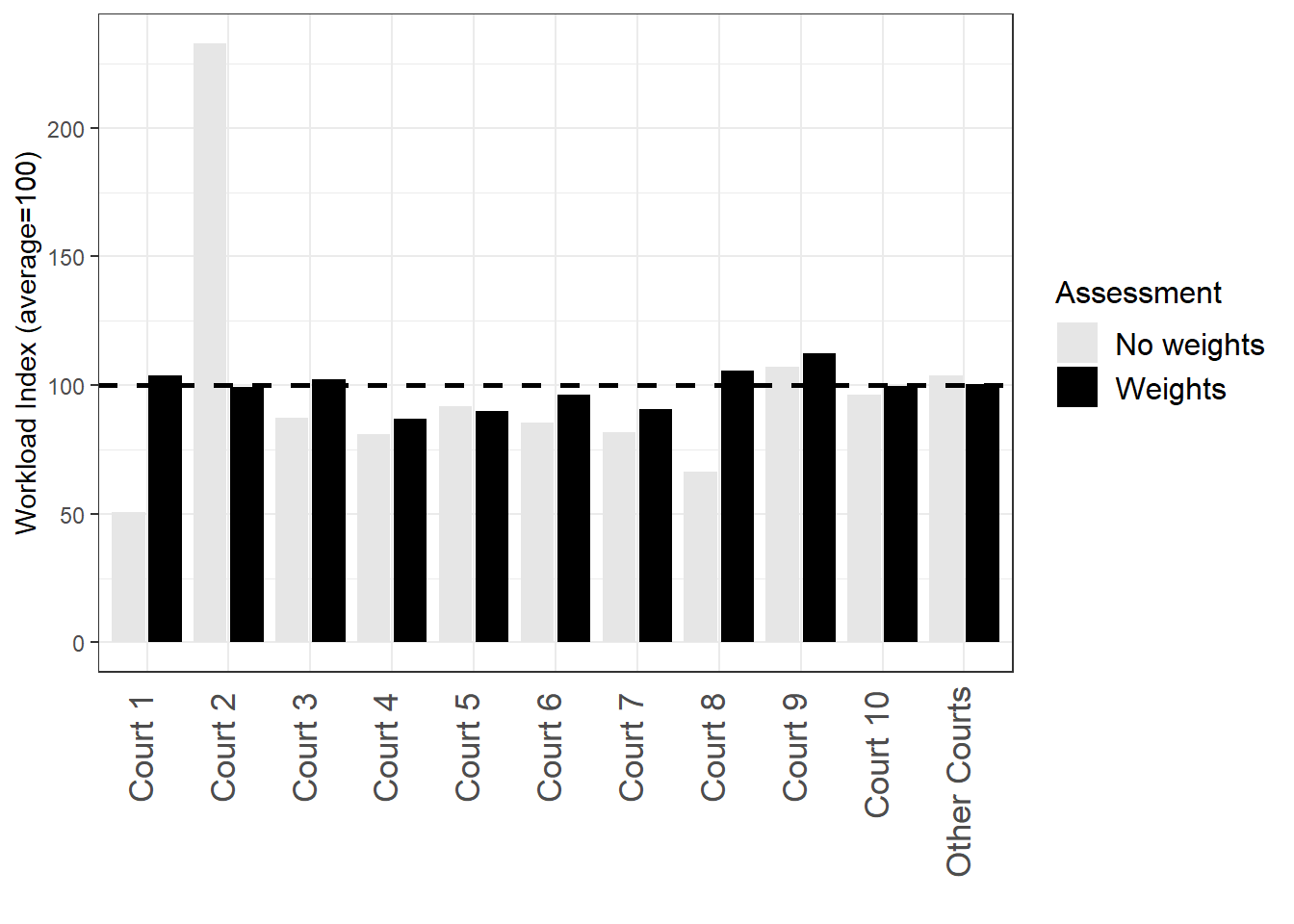1 The Danger of Ignoring Case Weights
A concrete example serves to illustrate how distorted measurement of judicial workload can be if we chose to focus only upon the total number of cases and neglect to take into account the composition of cases. In 2004 the courts in Denmark had established a case weighting system with weights for 17 different case groups. Figure 1.1 shows how the assessment of workload for the 10 largest courts would be if they are assesed by 1) the total number of (unweighted) cases per judge, or 2) the weighted number of cases per judge. The results have been indexed, so a value of 100 corresponds to the country average.

Figure 1.1: Workload assessment with and without case weighting
It is evident the two assessments provide very different results for several of the courts. If we measure workload by the total number of cases per judge (no weights), we are supposed to believe the workload per judge in court 2 is more than four times higher than in court 1. If we apply case weights, however, we find that the workload per judge is in fact higher in court 1 compared to court 2. It is therefore highly unfair - to court 1, but also to for example court 8 - to assess workload without taking into account the composition of cases.
Some peculiar characteristics of the Danish court system in 2004 may partly help explain these extreme differences between the two asessments. But the main cause of problem turns out be that case types with a low average workload make up a very large proportion of the total number of cases, and that these cases are unevenly distributed among courts. This situation - a large component of “minor” cases, and uneven distribution of those acses - appears in my experience to be a very common characteristic of court systems1.
As an indicator for workload the total number of cases is likely to be flawed (and unfair). For exactly these reasons, weighted caseload models have successfully replaced traditional methods of assessing court workload in many countries in the past decades.
In addition, statistics for these minor ”routine” cases tend to be more error-prone. This may serve to make the lack of weights even more problematic↩